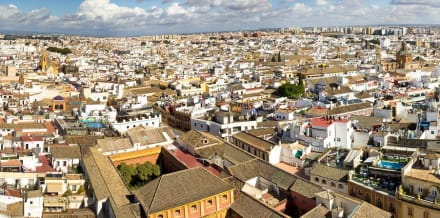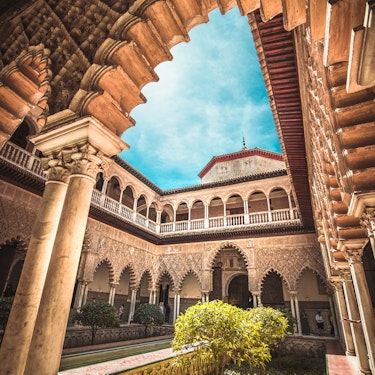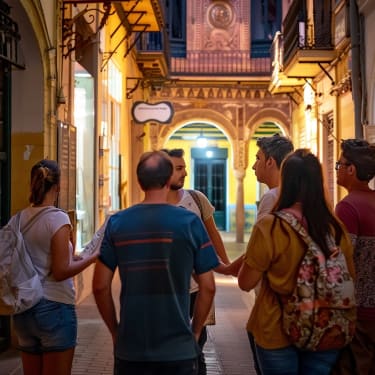More about: 6 Best Mysteries and Legends Tours in Seville
The city of Seville is as beautiful as it is intriguing. Its long history is peppered with tragic events, pestilences, unrequited lovers and ruthless inquisitors: the perfect cocktail for any lover of enigmas and mysteries.
Among the things to see and do in Seville, a mystery tour is always a good option. There are dozens of different routes and the first one focuses on haunted mansions. Some spirits still haunt the living...
1. Haunted House Tour
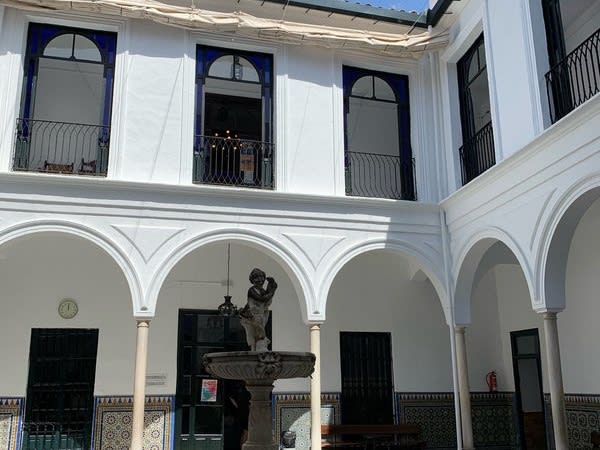
Being such a beautiful city, it is not surprising that some souls decided to stay here. Sevillians are well acquainted with the legends of spirits and some swear to have seen a woman in a nightgown in the Álvarez Quintero Theatre or a 19th century monk in Seville's town hall itself.
The haunted places are scattered throughout the old town, from the Santa Cruz quarter to Triana.
The British Institute and its white lady, the Don Cecilio Bookshop and the eponymous ghost or Casa Fabiola with its spirit of the Archbishop of Westminster are just some of the stages of these tours. Generally these types of tours are intended for those over 12 years of age.
- Duration: 1.5 hours
- Price: about €10
2. Tour of Seville and its people: Romans, Gypsies, Jews, Islamics and Catholics
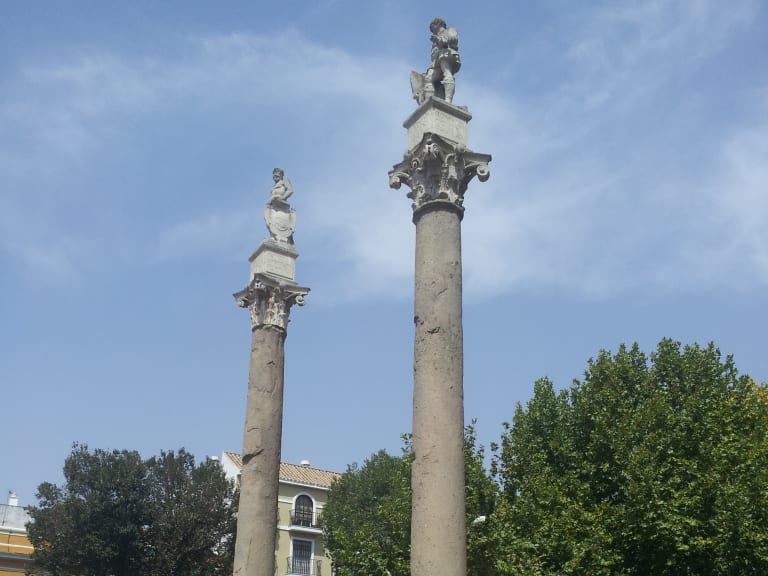
These routes explore the multicultural history of Seville's capital, focusing on the mysteries linked to the peoples who lived here.
Seville was a crossroads of cultures. Although its origins date back to the Tartessians, it became an important commercial centre during Roman times. It was known as Hispalis and traces of this era have survived to this day.
The columns of Hercules and Caesar in the Alameda de Hercules and the remains of the aqueduct in nearby Carmona are two witnesses to the Roman past.
Seville did not lose its relevance either in the Visigothic period or in the Islamic period when it became known as Isbiliya. Although it depended on the Caliphate of Córdoba, it was one of the most important cities in Al-Andalus.
Before the arrival of the Christians, it was also home to a large Jewish colony that lived mainly in what is now the Santa Cruz quarter. It is also worth mentioning the gypsy presence that was mainly concentrated in Triana, Seville's most picturesque neighbourhood.
- Duration: more or less 2 hours
- Price: between 5 € and 10 €.
3. Mysteries and Legends of Triana Tour
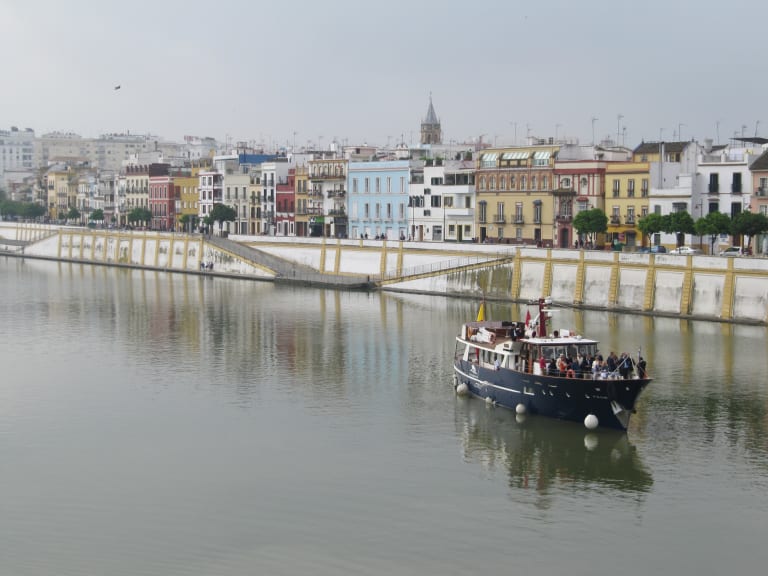
Do you know the story of Princess Cava? Have you ever heard of the Pinzón brothers? The history of Seville has been written in this neighbourhood and these are just two examples of its many legends.
As the birthplace of flamenco, some stories revolve around the birth of this art form which has been declared Intangible Cultural Heritage of Humanity by Unesco.
In Triana there is a lot to see and a guided walk is the ideal way to capture its nature. There are several routes and almost all of them touch on the essentials of the neighbourhood - Iglesia de Santa Ana, Castillo de San Jorge, Casa de la Esperanza, Calle Betis and the old Cava de los gitanos - and in some cases they go almost as far as Isla de la Cartuja.
- Duration: 2 hours
- Price: around 10 €.
4. Templar Seville Tour
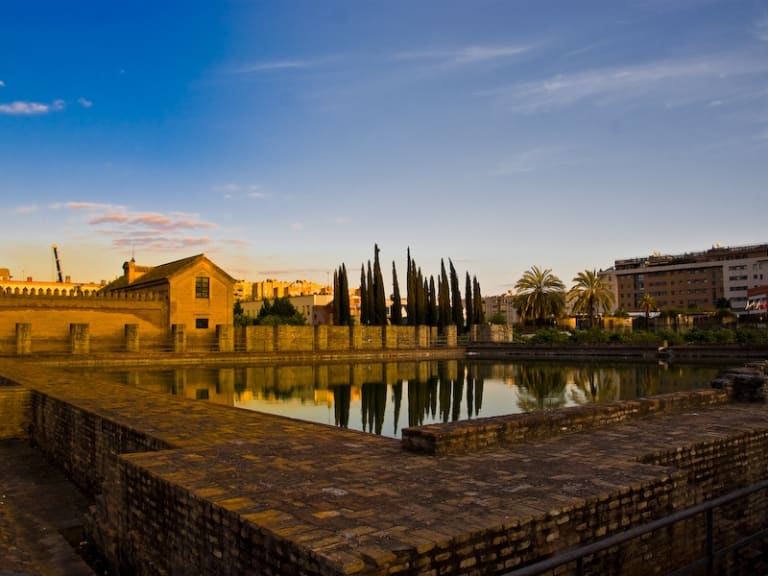
The Knights Templar played a fundamental role during the Reconquest. King Ferdinand III rewarded their help with a number of concessions, many of which are located in Seville.
In recent years, some tourist agencies have specialised in routes dedicated to the Templar past that touch on the following points:
- Barrio de San Bernardo, a district named after Saint Bernard of Clairvaux. The French monk exalted the Knights Templar in his work "Glories of the New Militia".
- The Buhaira Gardens, a green area that has refreshed the city since the time of Al-Mutamid, the last Abbot king of Seville. The Templars settled in this very place before launching their attack on the city.
- Church and Hospital de la Caridad, a Baroque masterpiece. Its construction is due to Miguel de Mañara, a member of the Order of Calatrava.
- El Arenal, a neighbourhood with a past of splendour. During the colonial era, gold and silver from America landed in the nearby Canal de Alfonso XIII. Its main icon is the elegant Plaza del Cabildo. Every Sunday morning it hosts a numismatic and philatelic flea market.
- Patio de los Naranjos, an adjunct to Seville Cathedral with its typical citrus trees. During the Golden Age it was frequented by people of dubious fame; being located inside a church it was not subject to civil law.
The Order of the Temple was very powerful and yet it had an even more fearsome enemy: Philip IV "the Fair". The King of France contracted a large debt with the Templars and, unable to pay it, decreed the outlawing of the movement. A papal bull put an end to the story in our country as well.
- Duration: between 1 and 1.5 hours.
- Price: more or less 10 €.
5. Dramatised tour of the San Fernando Cemetery
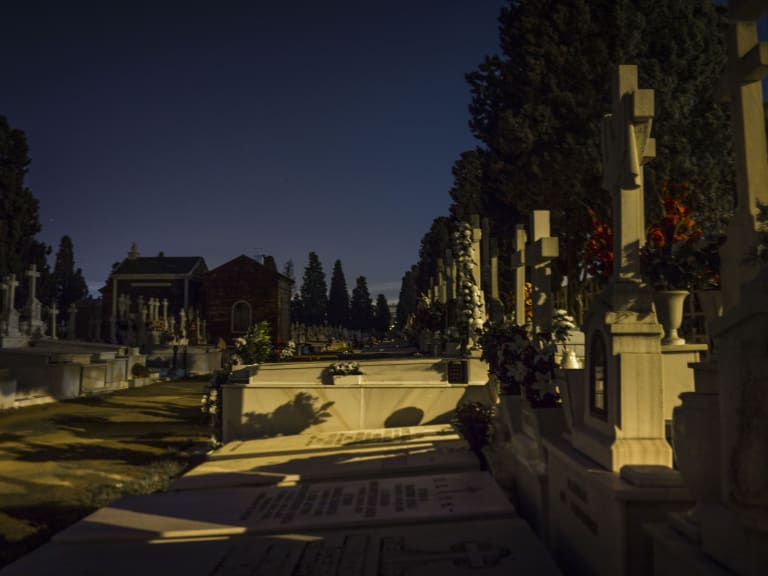
The cemetery dedicated to San Fernando is the most monumental in Seville and houses the tombs of its most illustrious sons. It was built in the 19th century and is inspired by the Parisian cemetery of Père-Lachaise. Its pantheons and sculptures are the perfect backdrop for dramatised tours.
In some cases, the routes focus on the performance of Don Juan Tenorio, the famous play by José Zorrilla. On other occasions, the night-time walks will take you to various corners of the cemetery and actors will bring the stories of the deceased to life. The guide knows dozens of chilling stories and legends.
To top it all off, a violinist will entertain you and help to create an atmosphere of mystery. Due to the content, these tours are not recommended for children under 14 years of age. If you are travelling to Seville with children, I recommend you read the dedicated article.
- Duration: 1 hour and a half
- Price: between 10 € and 15 €.
6. Tour of Seville and the plague
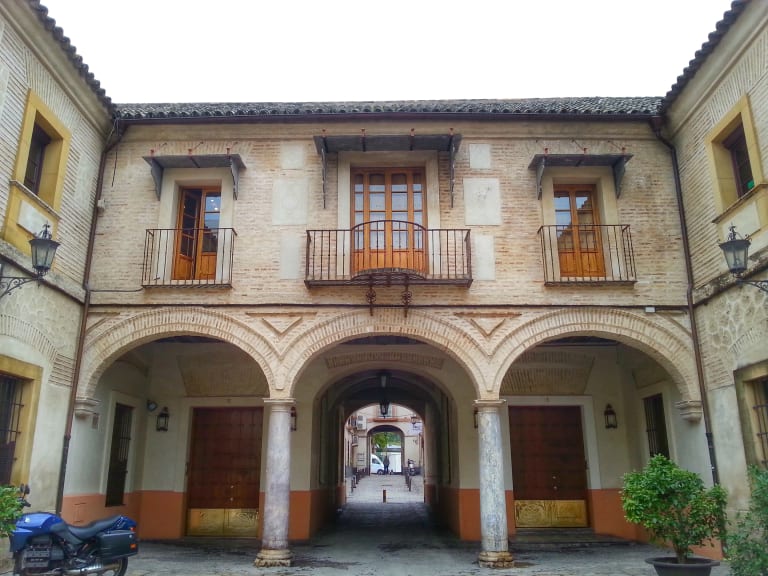
In 1649 the capital of Seville suffered the worst epidemic in its history. It was a dismal year for the city: the poor cereal harvest and an overflowing Guadalquivir river paved the way for the plague that took the lives of more than 60,000 people.
The Movistar series explains this chapter of Sevillian history very well.
The 17th century plague has left traces in different parts of the city and there are routes that reveal the mysteries of this dark period.
The first stop is usually the old Port of the Indies, where ships from the Americas landed laden with gold, spices and, unfortunately, also black mice carrying the bacterium Yersinia pestis. The routes also reach the following points:
- Alameda de Hércules. What today is a large tree-lined square, in ancient times was a marshy area: the ideal habitat for the development of diseases. There are many bars and some tapas tours pass through here.
- Casa de la Moneda, a small quarter that guarded the riches coming from America. In the 17th century Seville was very important as it was the starting point for trade with the New World.
- Reales Atarazanas, a shipyard for building galleys that was built during the reign of Alfonso X. It was the gateway to the plague in Seville.
- Casa de Monardes, the residence of the doctor and botanist of the same name. It helped the sick during the peak of the epidemic.
- Hospital de las Cinco Llagas, the sanatorium that took in the dying.
The guide will explain the most important details that will allow you to discover a different side of the city. Sometimes these urban routes are inspired by the Movistar series and stop in front of the buildings that hosted the filming. Guided tours usually start from a central location such as the Cathedral or the Torre del Oro.
- Duration: between 1.5 and 2 hours.
- Price: around 10 € per person
Are these tours suitable for children?
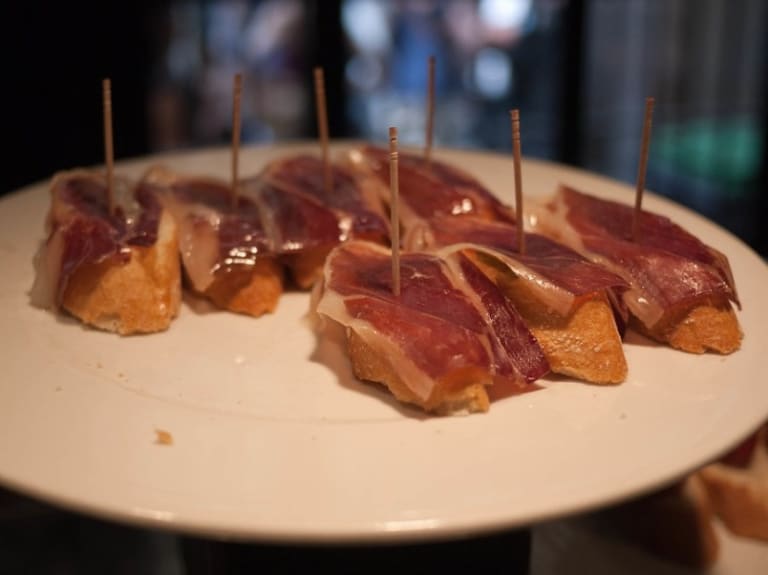
Most of these tours are not suitable for children under the age of 12 or 14. In any case, if you or your companion are impressionable, it might be better to opt for another route.
For example, you can choose a tapas tour of Seville or a bike tour.
Why should I choose a tour of mysteries and legends?
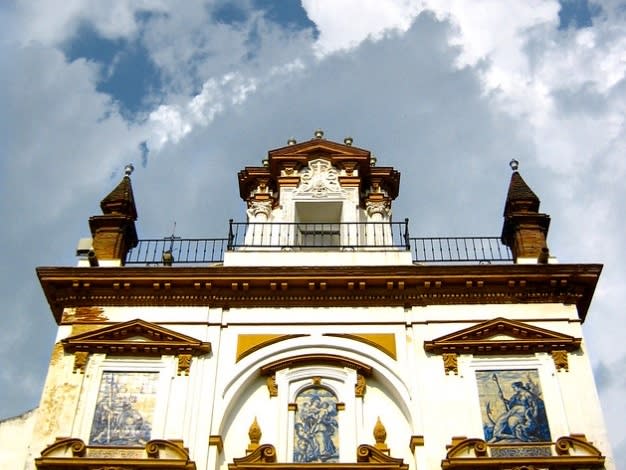
Seville is a charming city and is dotted with beautiful monuments. If you are tired of traditional sightseeing and feel like experiencing something different, a tour of mysteries and legends is a recommended option. You'll see the city from a different perspective without giving up on its history.
Moreover, these tours take place in the afternoon/evening; a very important element if you visit Seville in summer. Between June and the beginning of September, daytime temperatures reach 40º and in some cases can reach 45º. Fortunately, after sunset the mercury column drops and stabilises at around 20º.
Is it worth taking a tour of mysteries and legends in winter?
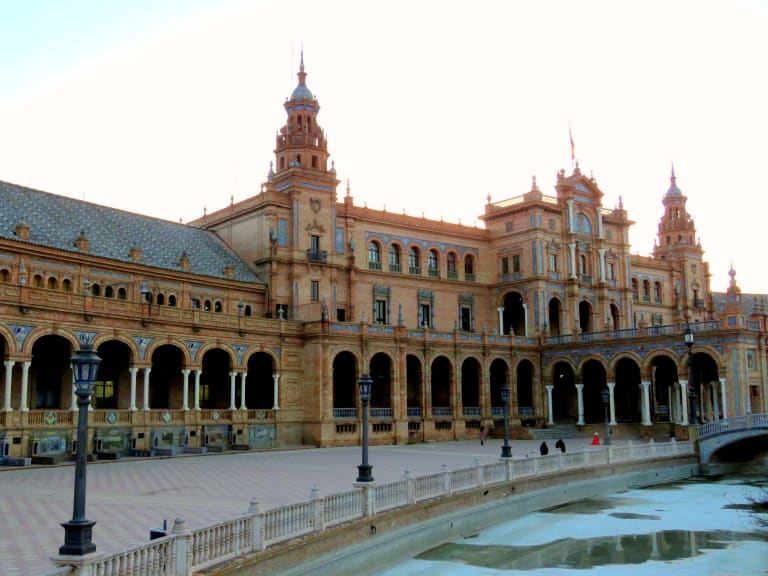
Of course it is! In a way we can say that winter hardly exists in the capital of Seville. The coldest month is January, but don't expect freezing weather: temperatures usually fluctuate between 6º and 16º. A warm coat and a light scarf are enough for an uncomplicated tour.
For more information on what to do in the cold months, I recommend reading the post on what to do in Seville in winter.
